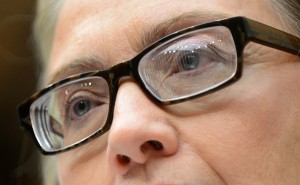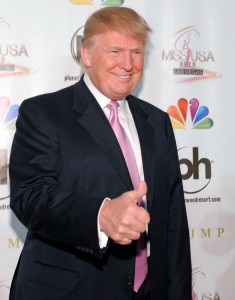
(UPI/Kevin Dietsch)
NEW YORK – In a largely negative presidential campaign, where most Americans are voting against, rather than for, a candidate, Democrat Hillary Clinton leads Republican Donald Trump 48 – 43 percent among likely voters nationwide, according to a Quinnipiac University national poll released today.
This compares to a 51 – 41 percent Clinton lead in an August 25 survey of likely voters nationwide, by the independent Quinnipiac (KWIN-uh-pe-ack) University.
With third party candidates in the race, results are too close to call, with Clinton at 41 percent, Trump at 39 percent, Libertarian Party candidate Gary Johnson at 13 percent and Green Party candidate Jill Stein at 4 percent.
Clinton and Trump get similar negative favorability ratings, 40 – 57 percent for her and 35 – 59 percent for him. For Johnson, 53 percent of voters haven’t heard enough to form an opinion of him and 72 percent haven’t heard enough about Stein.
Among Clinton voters, 54 percent say they mainly are voting against Trump, while 32 percent say they mainly are voting for Clinton.

(UPI/David Becker)
Among Trump voters, 66 percent say they mainly are voting against Clinton, with 23 percent saying they are voting mainly for Trump.
“No doubt the pneumonia will pass, but like a nagging cough that just won’t go away, Donald Trump defies every remedy Hillary Clinton throws at him,” said Tim Malloy, assistant director of the Quinnipiac University Poll.
“It’s the definition of ‘damned by faint praise,’ a presidential contest where a vote for a candidate is less an endorsement of that candidate than a stinging rejection of his or her opponent.
“Priority one for Hillary Clinton and Donald Trump as the election looms: lure the cynical, disaffected, downright disgusted electorate into their camp. That’s no mean feat as clouds of distrust loom over both campaigns.”
Racial and gender gaps continue to divide American likely voters:
White voters back Trump 51 – 41 percent and non-white voters back Clinton 66 – 19 percent;
Men back Trump 50 – 41 percent, while women back Clinton 54 – 36 percent.
Independent voters tip to Trump 45 – 40 percent. Republicans go to Trump 86 – 10 percent, while Democrats back Clinton 92 – 4 percent.
Voting for Clinton is the lesser of two evils, 38 percent of her supporters say, while 57 percent say she is the candidate they like.
Among Trump supporters, 50 percent say they are picking the lesser of two evils, while 46 percent say he is the candidate they like.
A total of 70 percent of likely voters say it is “very important” or “somewhat important” that the next president be someone to whom they can relate.
But by similar margins, most American voters can’t relate to either candidate. Voters say 61 – 36 percent they can’t relate to Clinton and 64 – 34 percent they can’t relate to Trump.
A total of 94 percent of likely voters say it is “very important” or “somewhat important” that the next president unite the nation.
But voters say 60 – 37 percent that Trump will do more to divide the country as president and say by a narrow 50 – 46 percent that Clinton will do more to divide the country.
By a narrow 51 – 47 percent, voters say Trump wants to be president to do what’s best for himself, rather than for the nation. Voters are divided on Clinton’s motives as 50 percent say she wants to do what’s best for herself and 48 percent say she puts country first.
“Donald Trump and Hillary Clinton may be King and Queen of the prom, but they are showing up solo and their dance cards are blank,” Malloy said. “The winner who waltzes at the Inaugural Ball will be the candidate who finally gets the other kids to like him or her.”
From September 8 – 13, Quinnipiac University surveyed 960 likely voters nationwide with a margin of error of +/- 3.2 percentage points. Live interviewers call landlines and cell phones.
The Quinnipiac University Poll, directed by Douglas Schwartz, Ph.D., conducts public opinion surveys in Pennsylvania, New York, New Jersey, Connecticut, Florida, Ohio, Virginia, Iowa, Colorado, North Carolina and the nation as a public service and for research.








